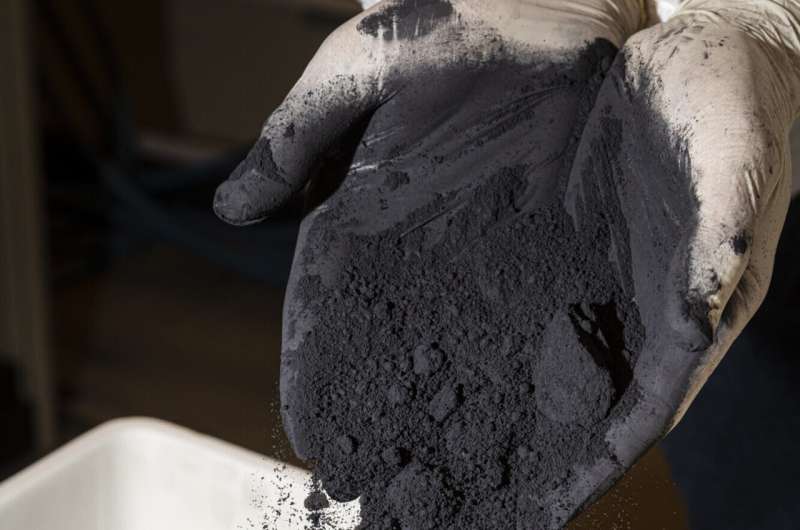
Solar energy is good news for planet Earth—but solar panels are not as climate-friendly as they should be. Researcher Martin Bellmann is using what he calls the “black gold” waste materials from solar panel manufacture to make new panels.
Solar energy is clean energy. Pure and simple. But things start to get complicated when it comes to obtaining the raw materials we need to make solar panels. Not only do most of these raw materials come from China, but as much as a third of the material is lost during the manufacturing process.
“But it’s possible to recover this material as part of the production process,” says Martin Bellmann. “And maybe this will enable us to establish a new solar-based industry in Europe,” he says. Bellmann is a Senior Business Developer at SINTEF Industry and is heading the international solar panel project called Icarus. Solar panels currently represent 60% of global growth in renewable energy.
From quartz to crystalline silicon
Bellmann explains how solar panels begin with the mineral quartz, which is used to make super-pure silicon. First, the silicon is melted in a crucible and a silicon crystal, or ingot, is pulled out.
“The ingot forms a kind of cylinder that grows and grows by slowly pulling the silicon from the crucible” says Bellmann. “It is then cut to form a square-sided block which is sawn into thin slices, or wafers, as we researchers call them,” he says.
A typical wafer is just 0.13 millimeters (13 micrometers) thick, and it is these wafers that are used to make solar panels.
But all this sawing results in a great deal of “sawdust” powder. It’s just like sawing a timber plank—some of the timber is lost in the form of sawdust. The same thing happens when you saw through a silicon ingot, even if you use thin diamond wires. Some material will always be lost as “silicon powder.”
Sawing wastes 35%
“We lose 35% of the silicon in the form of a black powder,” says Bellmann.
It is this powder, which he calls the new black gold, that the researchers are aiming to exploit.
“Today, we simply throw this powder away,” says Bellmann. What the Icarus project is doing, first and foremost, is looking into ways to return the powder to the value chain and use it to make silicon crystals and solar panels,” he says.
The powder is collected in a liquid sludge mixture that also contains contaminants from the sawing process such as oxygen, carbon, nickel, iron and aluminum.
“Silicon contaminated by these metals is not good for solar panel manufacture,” says Bellman
This is why he is working together with Icarus project partners to find ways of decontaminating the silicon powder so that it can be recycled as a raw material for new solar panels. What today we regard as waste can be used in other products such as electric vehicle batteries. A number of partners are testing different ways of separating silicon from the contaminated mixture.
A Europe-wide project
Naturally, the aim is to better exploit the raw material, which in turn will be good for the environment and the climate. But it is also a stated aim that Europe should achieve greater self-sufficiency.
“The European solar panel sector was once bigger than it is now, but everything has been moved to China,” says Bellmann. “Today, we’re heavily reliant on raw materials from Asia, and silicon is no exception. We’re planning to use the silicon powder to help reduce our dependency on China,” he says.
Bellmann is hoping that the Icarus research project will form the basis for a new industry, perhaps also in Norway. Norwegian energy is clean, and this is a major advantage in this context.
Recycling silicon, and more
A bonus resulting from the Icarus project is that researchers are planning to recycle the quartz crucibles that are used to smelt the silicon before it is pulled into crystals.
“The crucibles fracture when they cool down in the smelting oven,” says Bellmann. “Every time you smelt some quartz you have to get a new crucible and throw the old one away. Our aim is to use this as a raw material for making silicon carbide,” he says.
Silicon carbide is used in the electronics industry, among others, and electric vehicles are just one of many products that contain the material.
“Normally, we use so-called high-purity quartz to make silicon carbide, but this is very expensive,” says Bellmann. “Our idea is that it might be possible to replace high-purity quartz with crucible waste, which is also in essence quartz of very high purity,” he says.
The Icarus project is also looking into recycling graphite waste as a raw material for use in batteries, among others.
“High-purity graphite is also discarded,” says Bellmann. “It is used in the ovens where the silicon crystals are pulled out but has to be replaced from time to time because it loses its properties. The Icarus project is currently working with graphite waste, with the aim of recycling it,” he says.
Citation:
New solar panels from solar panel waste (2022, November 28)
retrieved 28 November 2022
from https://techxplore.com/news/2022-11-solar-panels-panel.html
This document is subject to copyright. Apart from any fair dealing for the purpose of private study or research, no
part may be reproduced without the written permission. The content is provided for information purposes only.
Stay connected with us on social media platform for instant update click here to join our Twitter, & Facebook
We are now on Telegram. Click here to join our channel (@TechiUpdate) and stay updated with the latest Technology headlines.
For all the latest Technology News Click Here
For the latest news and updates, follow us on Google News.
